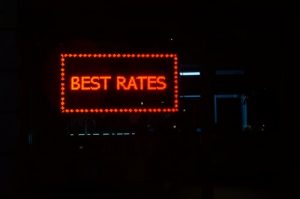You control certain factors that determine your mortgage rate, such as B. Your creditworthiness, but not others, such as B. The unemployment rate. If you know how to calculate mortgage rates, you can shop safely.
What factors determine mortgage rates?
Your mortgage rate is the same as a digital wristwatch: you see a number, but you don’t see the complex calculations hidden beneath it. The most important thing you should know is this: when determining your mortgage rate, some things are under your control, others are not.
This article examines the visible and invisible factors that determine your mortgage rate. Knowing these factors can give you more confidence to get a competitive interest rate if you choose a mortgage lender.
Mortgage rate factors you control
Lenders adjust mortgage rates to the risk they think the loan represents. So the riskier the loan amount, the higher the interest rate.
When assessing the risk, the lender takes into account the likelihood that you will fall behind on payments (or stop payments altogether) and the amount of money the lender could lose if the loan matured. The main factors are creditworthiness and the credit value ratio.
Credit Score
The lowest and best mortgage rates are given to borrowers with a credit score of 740 or higher. These borrowers have the widest choice of loan products.
Interest rates tend to be slightly higher for borrowers with credit ratings of 700 to 739. For borrowers with credit ratings of 620 to 699, mortgage rates are even higher. These borrowers may find it difficult or impossible to obtain high-quality jumbo loans.
With a credit score below 620, interest rates are even higher and there are fewer options. Most of the loans available at this level are insured or guaranteed by the government.
Value loans
The credit value ratio measures the amount of the mortgage compared to the price or value of the house. When you buy a house for $100,000, pay $20,000 and get a mortgage of $80,000, you are borrowing 80% of the value of the house, so your loan-to-value ratio is 80%.
If your credit value ratio is more than 80%, it is considered high and puts the lender at more risk. This can lead to a higher mortgage rate, especially in combination with a lower credit rating. The loan usually requires mortgage insurance.
Other factors
Lenders may charge higher fees for cash refinancing, variable-rate mortgages, and loans for prefabricated homes, condos, second homes, and investment properties as these are considered to be riskier.
Mortgage rate factors beyond your control
The general level of mortgage rates is determined by market forces. Mortgage rates rise and fall daily based on current and forecasted inflation rates, unemployment, and other economic indicators.
General economy
Mortgage rates tend to rise when there are prospects for rapid economic growth, higher inflation, and low unemployment. Mortgage rates tend to go down as the economy slows, inflation goes down and the unemployment rate goes up.
These economic signs do not always point in the same direction. During the long economic recovery after the Great Recession, inflation stubbornly remained below the Federal Reserve’s 2% target. Meanwhile, the economy has continued to grow and the unemployment rate has dropped to its lowest level in about 50 years. Mortgage rates have remained relatively low.
Inflation
Rising inflation is usually accompanied by higher interest rates as the dollar loses purchasing power as prices rise. Lenders demand higher interest rates as compensation.
Low inflation over the past 10 years has contributed to the decline in mortgage rates. The 30-year fixed-rate mortgage has remained below 5% for most of the past decade, a historically low level. In Freddie Mac’s weekly survey, the average interest rate over 30 years averaged 4.12% over 10 years until October 2019. An average of 6.35% over the 10 years completed in October 2009.



